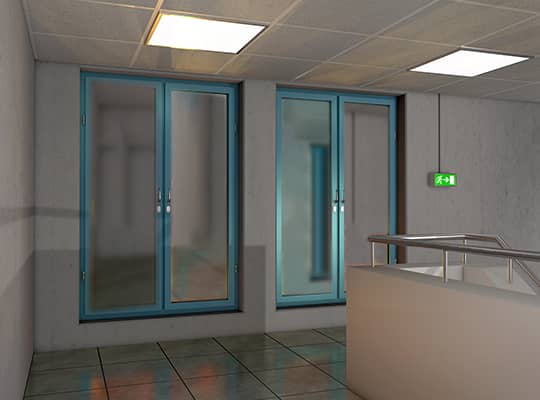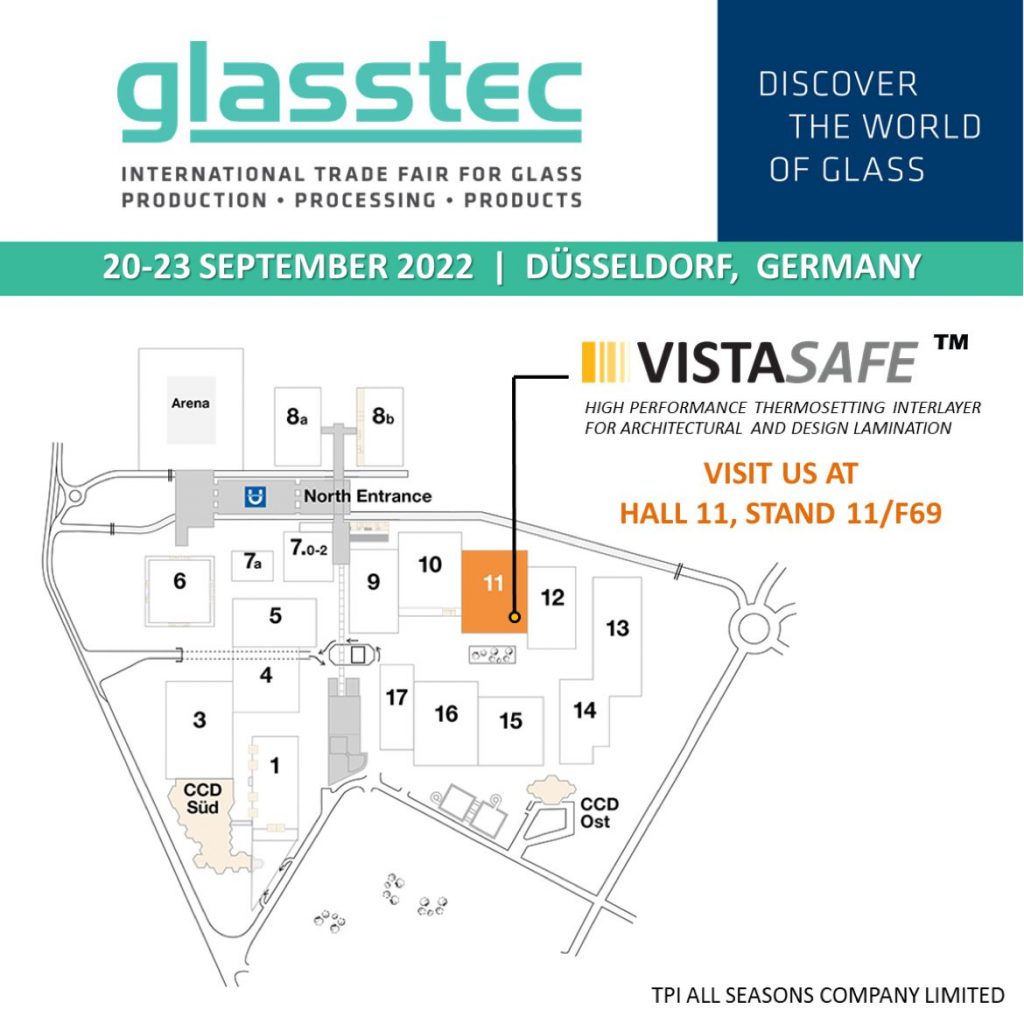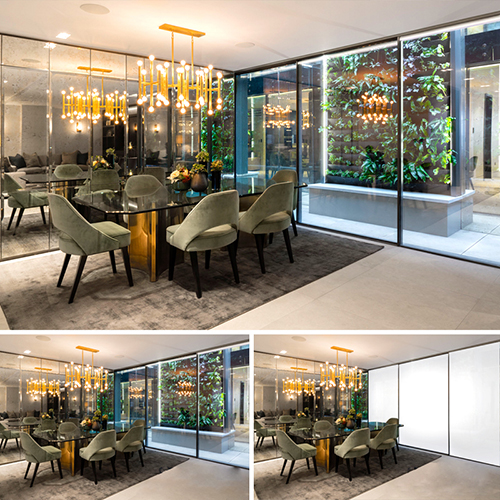FIRE RATED
Fire rated glass applications are on high demand due to the forever changing building and safety regulations in commercial and public environments. (See Approved Document B) To help our customers understand this product a little bit better, we need to start with the basics.



Advanced glass technology for privacy and more
Highly Effective
Double Embossed: VS102, VS103, and VS104 have been designed and manufactured with both surfaces being embossed, allowing an easier de-airing even in low-quality ovens with a not-so-efficient vacuum pump.
Compatibility
Low temperature crosslinking: Vistasafe interlayers can be laminated with temperatures as low as +100°C (time dependent) and hence providing the possibility of lamination with sensitive inserts and materials.
Maximum Clarity
Transparency unmatched: The Vistasafe interlayer range is the clearest, most transparent EVA in the market, and offers new possibilities in combination with Low-Iron, Antireflective, or even Switchable glass.
Durable Choice
Superb hydrophobicity: Not all EVAs are the same. Vistasafe is one of the few interlayers available with a perfect thermosetting property. This makes the entire Vistasafe range the perfect candidate for outdoors.
Areas of usage
Current legislation permits the use of glass products in building, as glass has many positive attributes in terms of providing a fire-safe building. It is essentially non-combustible and, therefore, complies with all the regulations and requirements for the surface spread of flame. If insulated properly, the glass will not permit smoke to penetrate, nor will it produce smoke during the critical developing phase of a fire. Non-insulated glass rarely fails integrity in the center of the pane, but gaps may develop at the perimeter of the panel. Such gaps are normally associated with the deformation of the glazing system, and intumescent materials can compensate for this by expanding to fill any gaps that start to develop. When intumescent laminate reacts to fire and expands, it changes color from transparent to opaque.
Fire resistant properties in the glass construction elements determine how far that element can limit the spread of fire by restricting it to a specific area. The fire resistance of a glass construction element is measured against several criteria. It is important to know, that fire resistance rating applies to the entire construction, including the frame and the glass as well. These two elements can only be interpreted as integral parts of one and the same system.
The insulation criteria are that the temperature rise of the separating elements (insulation tape, gasket, etc…) must not exceed 180°C, and the mean temperature rise of the protected side should remain below 140°C. The test furnace simulates a room fire after a flash-over when air temperature rapidly rises. The flash-over point is the moment of near simultaneous ignition of most of the directly exposed combustible materials. The fire-resistant glazed building element is installed in front of the furnace. During the test, measurements are taken, and observations are made on the opposite side of the fire. Fire resistance tests are conducted according to standardised test methods that outline in detail how the test must be conducted, and which criteria need to be fulfilled.
Most of these test standards follow the Standard Time Temperature Curve according to ISO 834. The test conditions are measured and controlled with plate thermometers and pressure sensors to accurately ensure reproducible results. After just three minutes the temperature in the furnace rises to more than 500 degrees Celsius which is 900 degrees Fahrenheit. After 30 minutes the temperature has risen to almost 850 degrees Celsius which is 1600 degrees Fahrenheit, and continuously rises throughout the test. Three hours into a test, the temperature can rise to over 1100 degrees Celsius which is 2000 degrees Fahrenheit. On the opposite side of the fire temperatures are measured with thermo-couples placed on glass and framing surfaces, and the radiated heat of the tested element is measured with a radiometer.
All fire rated applications are being tested extendedly to determine the applicable fire resistance level and size limitations. The available sizes often pose difficulties when selecting the right product. It is a quite common issue, that the existing aperture required to be transformed into a fire-rated application, restricts our range of options. On many occasions the available product turns out to be a higher performance and more expensive one, than what we would need for the area in question. This is of course due to the varying size limitations which are not always work in our favour, however it is just as important to be done by the book, as any other part of the fire-rated system as explained above. It might be worth considering adjusting the existing opening to match a cheaper glass product, that complies with the relevant regulations, rather than applying such an expensive one, that we do not really need for the original purpose.
| wdt_ID | Description | Thickness | Frame Material | Frame Application | Integrity/Insulation |
|---|---|---|---|---|---|
| 1 | 7mm Pyrodur Plus 30-104 | 7 | Timber | Doorsets | 30/00 |
| 2 | 7mm Pyrodur Plus 30-104 | 7 | Timber | Screens | 30/00 |
| 3 | 7mm Pyrodur Plus 30-104 | 7 | Timber | Screens | 30/00 |
| 4 | 7mm Pyrodur Plus 30-104 | 7 | Steel | Doorsets | 30/00 |
| 5 | 7mm Pyrodur Plus 30-104 | 7 | Steel | Screens | 30/00 |
| 6 | 7mm Pyrodur Plus 30-104 | 7 | Timber | Doorsets | 30/00 |
| 7 | 7mm Pyrodur Plus 30-104 | 7 | Timber | Screens | 30/00 |
| 8 | 7mm Pyrodur Plus 30-104 | 7 | Composite | Doorsets/DL | 30/00 |
| 9 | 7mm Pyrodur Plus 30-105 | 7 | Composite | Doorsets/SS | 30/00 |
| 10 | 7mm Pyrodur Plus 30-105 | 7 | Timber | Doorsets | 30/00 |
| Thickness | Frame Material | Frame Application |







